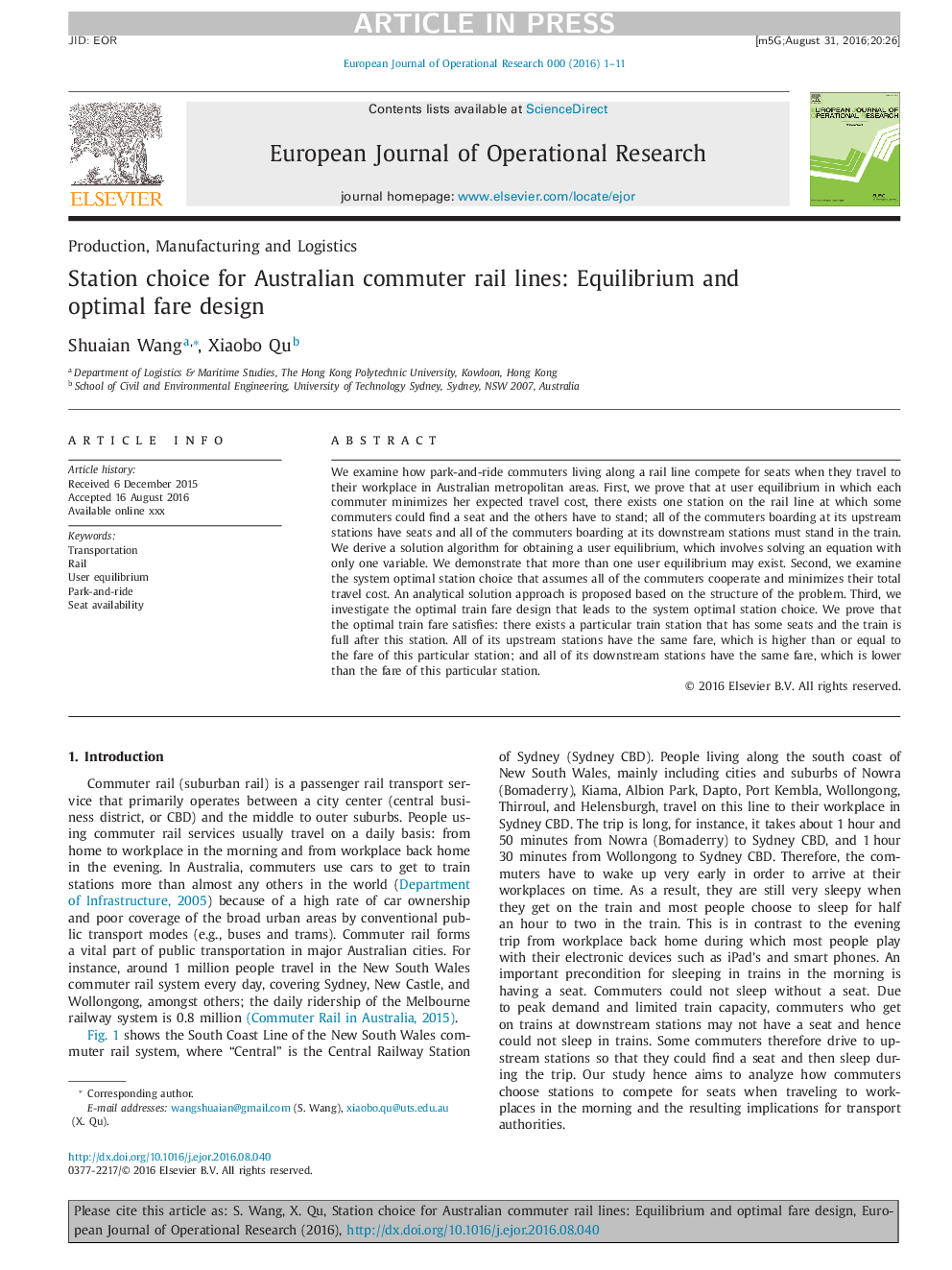| Article ID | Journal | Published Year | Pages | File Type |
|---|---|---|---|---|
| 4959957 | European Journal of Operational Research | 2017 | 11 Pages |
Abstract
We examine how park-and-ride commuters living along a rail line compete for seats when they travel to their workplace in Australian metropolitan areas. First, we prove that at user equilibrium in which each commuter minimizes her expected travel cost, there exists one station on the rail line at which some commuters could find a seat and the others have to stand; all of the commuters boarding at its upstream stations have seats and all of the commuters boarding at its downstream stations must stand in the train. We derive a solution algorithm for obtaining a user equilibrium, which involves solving an equation with only one variable. We demonstrate that more than one user equilibrium may exist. Second, we examine the system optimal station choice that assumes all of the commuters cooperate and minimizes their total travel cost. An analytical solution approach is proposed based on the structure of the problem. Third, we investigate the optimal train fare design that leads to the system optimal station choice. We prove that the optimal train fare satisfies: there exists a particular train station that has some seats and the train is full after this station. All of its upstream stations have the same fare, which is higher than or equal to the fare of this particular station; and all of its downstream stations have the same fare, which is lower than the fare of this particular station.
Related Topics
Physical Sciences and Engineering
Computer Science
Computer Science (General)
Authors
Wang Shuaian, Qu Xiaobo,
